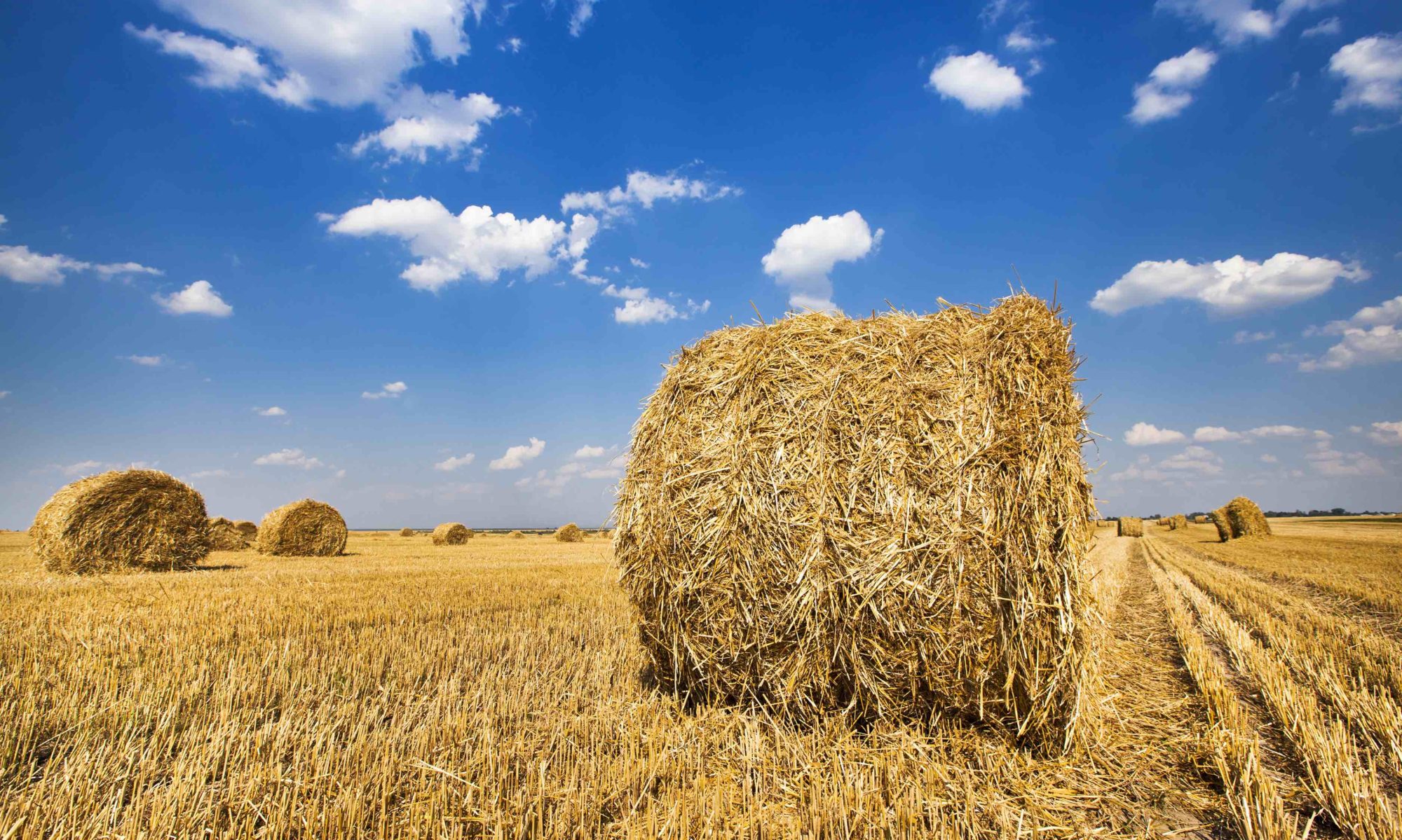Of the four SBA regions, Poland has a considerably larger area under forest, about 4 times larger compared with the area in Mecklenburg-Western Pomerania, 5 times larger than in Skåne and 24 times larger than in Region Zealand . Denmark has comparably small forest area in absolut terms and as proportion of the total land area. Compared to the 70% of area under forest in the whole of Sweden, Skåne has only about 40% of its area covered with forest.
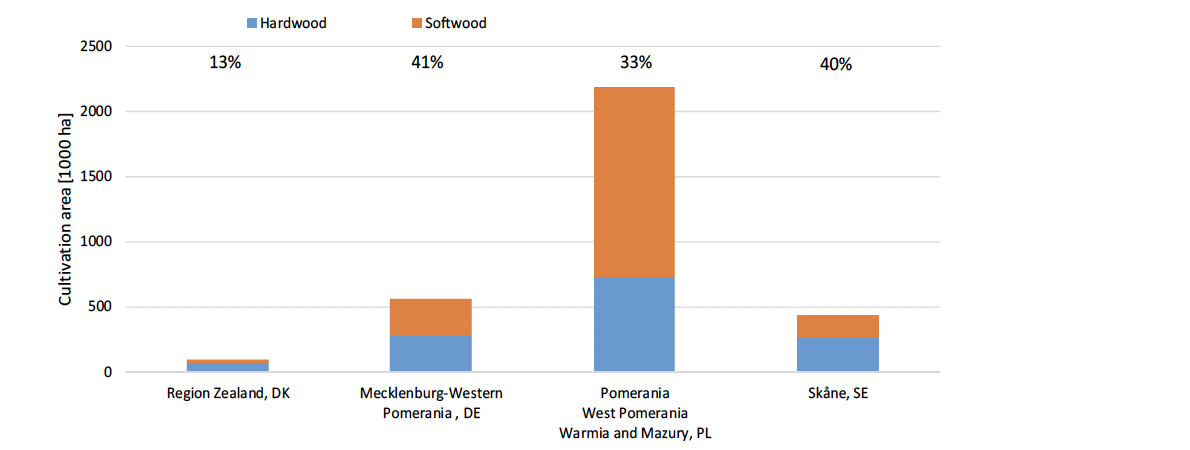 Figure 1. Forest area for hardwood and softwood in the four SBA regions. Numbers above the columns refer to share of forestry area on total land area (Ref. 1).
Figure 1. Forest area for hardwood and softwood in the four SBA regions. Numbers above the columns refer to share of forestry area on total land area (Ref. 1).
While Denmark is extracting almost 90% of its relatively small wood production, Mecklenburg- Western Pomeranina could almost double its wood extraction. The Polish SBA regions respresent the in absolute terms largest potential for wood extraction, which could be expanded considerably as well. These data are based purely on increment data and have not been assessed for if extraction can be carried out sustainably.
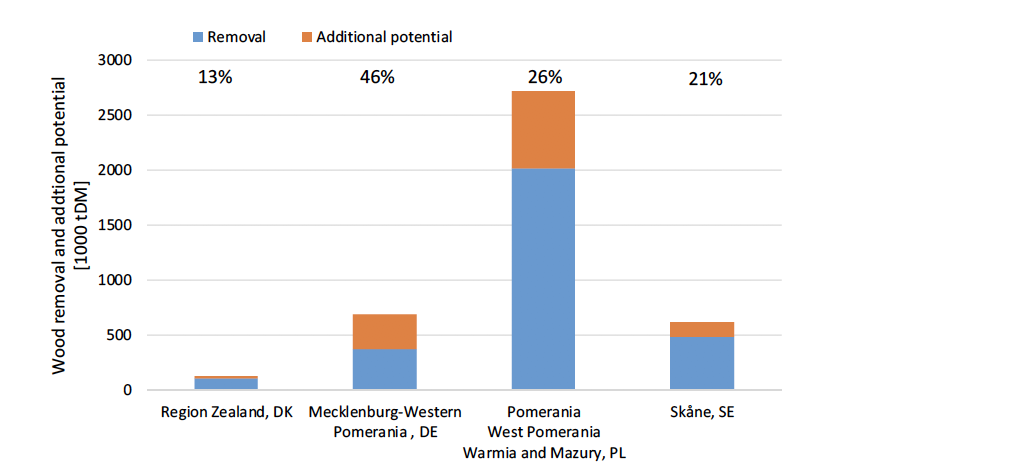
Figure 2: Wood removal for material anad energy purposes and additional potential in the four SBA regions. Numbers above the columns refer to the proportion of unused biomass potential (Ref. 2).
Opportunities
The forest and wood-processing industry has long since been a sector characterised by highly efficient large-scale biorefineries. Due to a high energy demand in the facilties, by-products have often been used for heat and power generation. However, in light of decrease demand for paper and an increasing bioeconomy, the sector is inventing itself again and research has focused on a large variety of speciality products from wood, such as packaging materials, textiles, vehicle fuels, insultation, cosmetic, plastic films, nanocellulose and materials for batteries.
Wood fuels made from residues of the timber extraction ans well as residues from the sulfat cooking processes are current the largest by-products. Furthermore, tall oil from pulp production is already refined for green chemicals and biofuels. The main conversion technologies applied to these new products include extract, bioconversion, fasification, pyrolysis and separation processes .
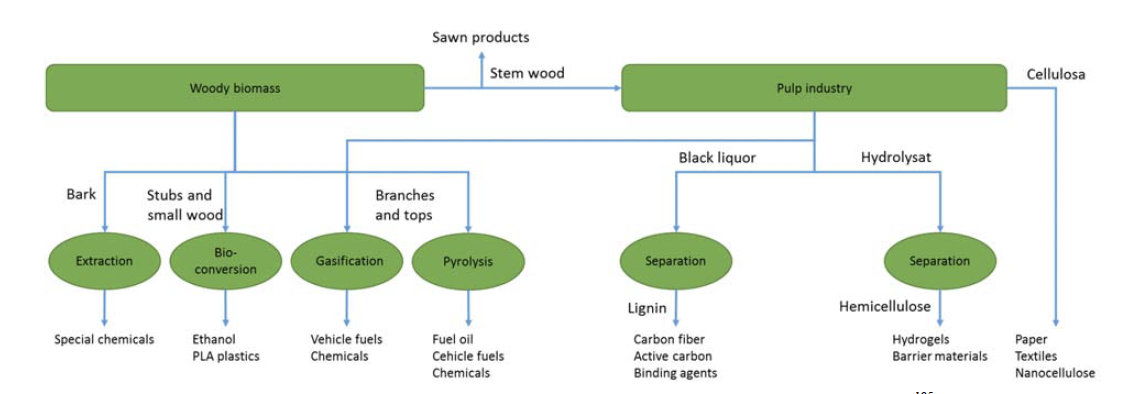 Figure 3. Schematic overview of the main development paths for new products from forestry and pulp industry (Ref. 3).
Figure 3. Schematic overview of the main development paths for new products from forestry and pulp industry (Ref. 3).
Newly designed processes aim at producing e.g. speciality chemicals such as succinic acid, cellulosic ethanol, 1,3-propanediol, 1,4-butanediol, bio-isobutene, ethylene, polypropylene and farnesene. The list of suggested bio-based products has been extended of the last decade and continues to expand. 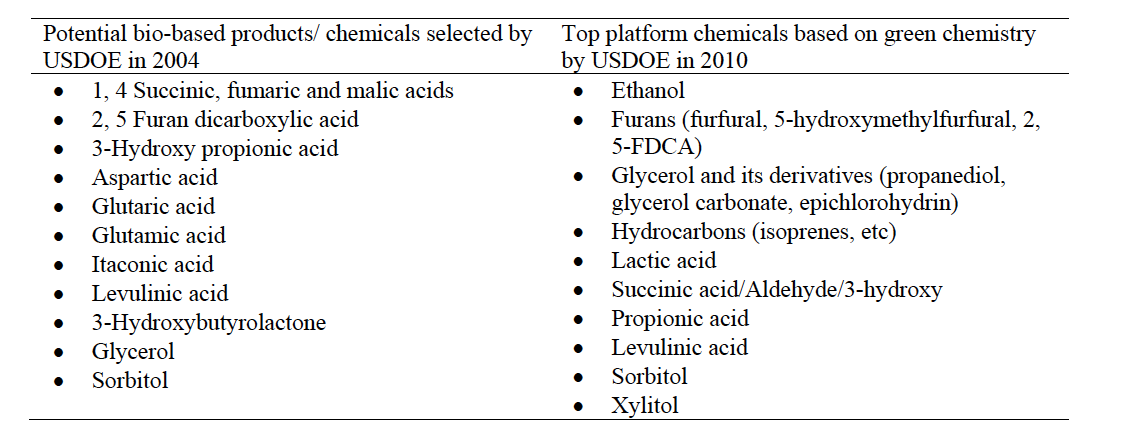 Table 1. Potential bio-based products/chemicals selected by US Department of Energy (USDOE) from lignocellulose biorefinery platform (Ref. 4). Table reproduced from Chandel et al, 2011196 (Ref. 5).
Table 1. Potential bio-based products/chemicals selected by US Department of Energy (USDOE) from lignocellulose biorefinery platform (Ref. 4). Table reproduced from Chandel et al, 2011196 (Ref. 5).
Bottlenecks
Despite considerable value creation potential, commercialisation of biorefineries as described above is often technically and economically difficult due to high capital and operating costs as well as difficulties in the feedstock supply, technical process immaturity and challenges in scale-up.
On the supply side, feedstock logistics for residues from primary wood production and collection of waste wood are pointed out as economic bottleneck for large-scale biorefineries, where the need for a large collection area increases transport distances considerably. Also, seasonal availability impacts the supply chain with challenges for the logistics system. Alternative uses of waste wood,e.g. for energy purposes, further decrease profitability and may lead to unstable supply.
In addition to platform and speciality chemicals, fiber-based materials facilitating technical advance in the fields of e.g. bioengineering and flexible electronics, are suggested as new products for the bioeconomy.
In conclusion, biorefineries using lignocellulosic feedstock from the forestry and pulp sector have a wide range of potential speciality products for the bioeconomy. To overcome the technical and economic challenges that these large-scale refineries face, economic incentives and policies changes have been suggested, but the complexity of the biorefinery systems requires highly specific solutions.
References:
1. Prade, T., Andrzejczyk, R., M. Booker Nielsen, B. Cuypers, P. Dąbrowski, A. Ekman Nilsson, T. Kjær, J. Lund, D. Mikielewicz, M. Mittenzwei, D. Schiller, J. Wajs and M. Westkämper (2019). Biomass and innovation potential of residues, by-products and other sustainable feedstock for biobased products in four South Baltic Area regions, Interreg project Bioeconomy in the South Baltic Area: Biomass- based Innovation and Green Growth – BioBIGG. Page 83, Figure 48.
2. Prade, T., Andrzejczyk, R., M. Booker Nielsen, B. Cuypers, P. Dąbrowski, A. Ekman Nilsson, T. Kjær, J. Lund, D. Mikielewicz, M. Mittenzwei, D. Schiller, J. Wajs and M. Westkämper (2019). Biomass and innovation potential of residues, by-products and other sustainable feedstock for biobased products in four South Baltic Area regions, Interreg project Bioeconomy in the South Baltic Area: Biomass- based Innovation and Green Growth – BioBIGG. Page 83, Figure 49.
3. Backlund, B. and M. Nordström (2014). Nya produkter från skogsråvara – En översikt av läget 2014 Stockholm, Sweden, Innventia & Skogsforsk: 67.
4. U.S. Department of Energy, 2011. U.S. Billion-Ton Update: Biomass Supply for a Bioenergy and Bioproducts Industry. In: Perlack, R.D., Stokes, B.J. (Eds.), ORNL/TM-2011/224. Oak Ridge National Laboratory, Oak Ridge, TN.
5. Chandel, A. K., V. K. Garlapati, A. K. Singh, F. A. F. Antunes and S. S. da Silva (2018). The path forward for lignocellulose biorefineries: Bottlenecks, solutions, and perspective on commercialization. Bioresource Technology 264: 370-381.
